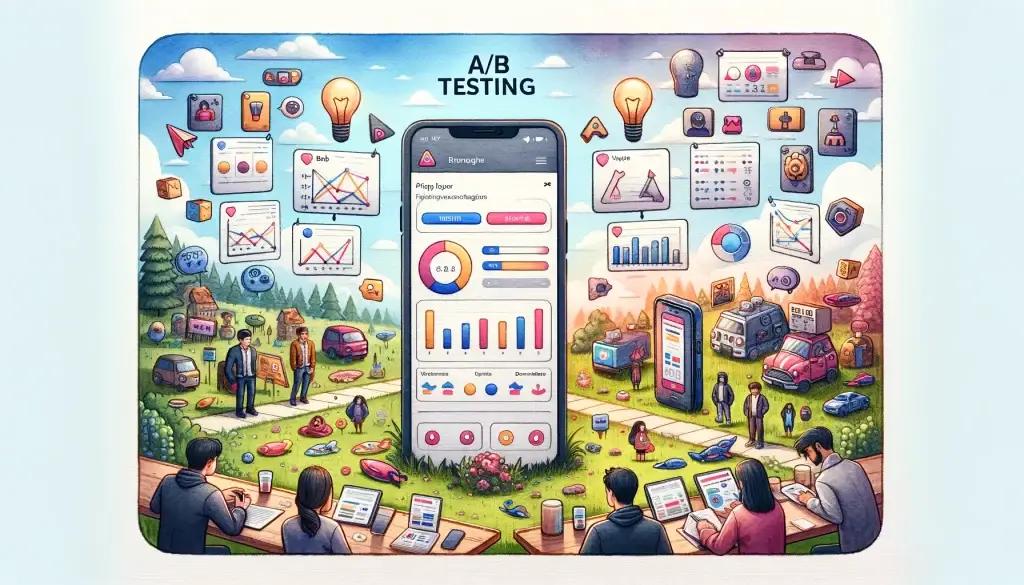In the ever-evolving landscape of web development, keeping users engaged is crucial. Gamification—a trendsetter in modern web design—has proven to be an effective strategy for enhancing user interaction and retention. By incorporating game-like elements into your website, you can create an engaging experience that encourages users to stay longer, interact more, and come back frequently. This comprehensive guide will walk you through the steps to effectively integrate gamification into your web design, ensuring your site stands out in a competitive digital world.
Step 1: Understand Your Audience
Description
Before diving into gamification, it’s essential to understand your audience. Identify their preferences, motivations, and behaviors to tailor your gamification elements effectively.

Implementation
Conduct surveys, analyze user data, and create detailed personas. Understanding your audience’s demographics and psychographics will help you design engaging gamification elements that resonate with them.
Step 2: Define Clear Objectives
Description
Set clear objectives for what you want to achieve with gamification. These objectives could range from increasing user engagement, boosting sales, improving learning outcomes, or enhancing user retention.

Implementation
Align your gamification strategy with your business goals. For instance, if Pycodehub, a leading web development agency, aims to increase user interaction on its website, it might implement a points-based system that rewards users for engaging with content.
Step 3: Choose the Right Game Mechanics
Description
Game mechanics are the building blocks of gamification. Choose mechanics that best suit your objectives and audience. Popular mechanics include points, badges, leaderboards, challenges, and rewards.

Implementation
For example, a points system can motivate users to complete tasks on your site, while badges can provide recognition for achievements. A leaderboard fosters healthy competition, encouraging users to stay engaged.
Step 4: Integrate Storytelling Elements
Description
Storytelling is a powerful tool in gamification. It provides context and meaning to the game mechanics, making the experience more immersive and engaging.

Implementation
Create a narrative that aligns with your brand. For instance, Pycodehub could craft a story where users embark on a digital adventure, earning points and badges as they explore the site and complete tasks.
Step 5: Design an Intuitive User Interface
Description
An intuitive user interface (UI) is crucial for a seamless gamification experience. Ensure that the gamified elements are easy to understand and interact with.

Implementation
Incorporate visual cues and clear instructions to guide users. Use engaging visuals and animations to highlight achievements and progress. For example, a progress bar can show users how close they are to earning a reward.
Step 6: Provide Meaningful Rewards
Description
Rewards are a significant motivator in gamification. Ensure that the rewards you offer are valuable and relevant to your users.

Implementation
Offer rewards that align with your audience’s interests. For instance, Pycodehub could provide exclusive access to premium content, discounts on services, or recognition on a leaderboard.
Step 7: Encourage Social Interaction
Description
Social interaction enhances the gamification experience by fostering a sense of community and competition. Encourage users to share their achievements and engage with others.

Implementation
Incorporate social sharing buttons, forums, and leaderboards. For example, users can share their achievements on social media or compete with friends on a leaderboard, promoting a sense of camaraderie and competition.
Step 8: Use Data to Improve and Iterate
Description
Collect and analyze data on user interactions with gamified elements to continuously improve the experience.

Implementation
Use analytics tools to track user behavior and gather feedback. Regularly update and refine your gamification elements based on data insights. Pycodehub can leverage these insights to fine-tune its gamification strategy, ensuring it remains effective and engaging.
Step 9: Ensure Mobile Optimization
Description
With the increasing use of mobile devices, it’s essential to ensure that your gamification elements are optimized for mobile users.

Implementation
Design a responsive interface that works seamlessly across all devices. Test your gamified elements on different screen sizes and ensure they provide a consistent and engaging experience for mobile users.
Step 10: Promote Your Gamified Experience
Description
Promote your gamified experience through various channels to attract and engage users.

Implementation
Leverage social media, email marketing, and SEO to promote your gamified elements. Highlight the benefits and rewards of participating in your gamified experience. For instance, Pycodehub could run a social media campaign showcasing user achievements and encouraging new users to join.
Conclusion
Gamification in web design is a trendsetter, offering a dynamic and engaging way to interact with users. By understanding your audience, setting clear objectives, and incorporating the right game mechanics, you can create a captivating experience that keeps users coming back. Pycodehub, as a leading web development agency, can help you implement these strategies to ensure your website not only stands out but also fosters user loyalty and growth. Embrace gamification and watch your user engagement soar like never before.






